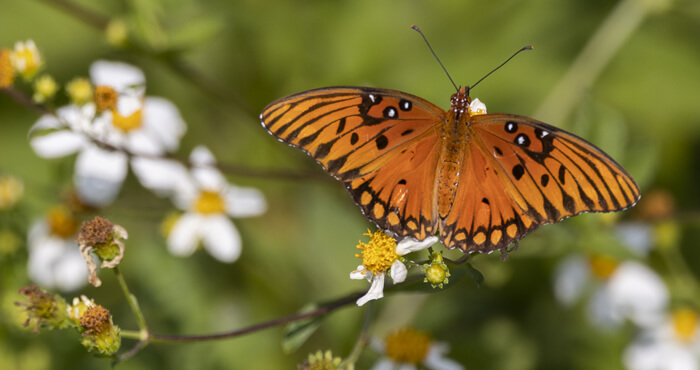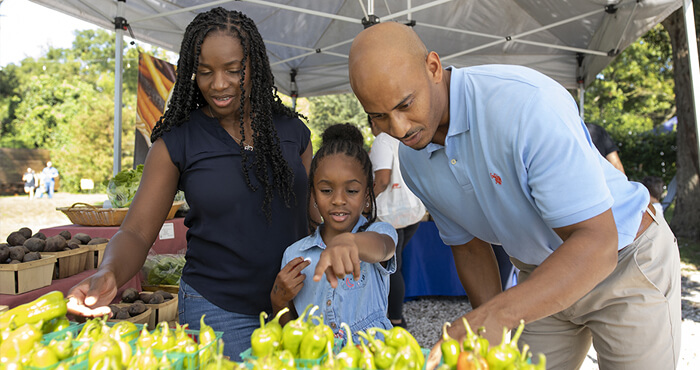
Florida Azaleas
Spectacular flower masses and colors, plant form, and evergreen foliage are among the reasons for the popularity of azaleas. Florida azaleas bloom from late February to early April, depending on cultivar and seasonal variation. Many azalea cultivars grow well in north and central Florida, but fewer are recommended for south Florida.
Azaleas can enhance the home landscape in many ways. They are used in foundation plantings, in mass borders, or as specimen plants. Generally, they are better adapted to informal landscape designs due to their open, sprawling growth habits. Large azaleas are useful as background for lower plantings, while low-growing ones are useful as foreground plantings. When choosing azaleas for your landscape, consider the following factors:
- mature size and form,
- flower size and color,
- flowering season, and
- adaptability.
Flower initiation follows spring growth, and flower bud development continues in late summer and fall. Flower bud dormancy is usually broken by exposure to temperatures below 50°F (10°C) for four to eight weeks followed by warm temperatures. Florida's warm winter temperatures may not provide adequate chilling for northern hybrids, resulting in sporadic flowering. Due to greater winter temperature fluctuation, sporadic flowering is more common in central and south Florida than in north Florida.
General Culture
Sun & Shade
Florida azaleas perform best in areas with filtered sunlight. Their shallow root system and low tolerance to poor soil drainage make placement and care important. Partial shade under pine trees or strategically spaced hardwoods provides conditions for healthy growth and optimum flowering. Dense shade reduces plant growth and flowering.
Azaleas exposed directly to early morning sun after a hard freeze are susceptible to cold injury. Rapid thawing of frozen twigs and branches may result in bark splitting. Death of branches with split bark may not occur until weeks or months after the injury.
Soils
Well-drained, organic soils with a pH of 4.5 to 5.5 are best suited for azaleas. Organic amendments and fertilization are usually needed to modify Florida soils for proper azalea growth. Fertilizers, organic amendments, and pH-adjusting amendments should be incorporated into the planting bed or soil backfill during planting.
Preparation of the entire planting area is best when a number of azaleas are being transplanted together. Organic amendments--such as peat, compost, or pine bark--help increase water and nutrient retention and lower the soil pH. A soil test will determine the pH of your existing soil and provide a basis for fertilizer recommendations.
Ample quantities of iron and other micronutrients may not be available in soils with a pH higher than 5.5. You can modify soils with a pH higher than 5.0 using applications of elemental sulfur. Excessive rates will injure plant roots, so apply no more than 1 pound of sulfur per 100 square feet of planting at one time, and apply sulfur no more than two or three times a year. Dolomitic lime should be incorporated to raise the pH of soils with a pH lower than 4.5. Soil adjustment should be made based on a recent soil test.
Transplanting
The planting hole for containerized or balled and burlapped azalea plants should be approximately six inches deeper and twelve inches wider than the root mass. An organic amendment--such as peat, composted leaves, or pine bark--can be incorporated into the backfill soil at a rate not to exceed one-third volume by volume. Generally, Florida azalea plants should be spaced three to five feet apart, but the ideal spacing varies according to the mature size of the cultivar.
Azaleas should be planted at or above the depth at which they grew in the container or nursery. An organic mulch applied to a depth of 2 - 3 inches will conserve water and reduce weed problems. November to February is the best season for transplanting, but containerized azaleas may be transplanted at any time if proper care is provided.
Watering
Irrigation is necessary for optimum plant growth during extended dry periods. Plants transplanted during the dry season into sandy soils may require watering of the root mass twice a week. Generally, established plants should be watered every 10 - 14 days during dry periods to wet the soil to a depth of 14 - 18 inches.
Fertilization
Frequent, light applications of fertilizers are necessary in Florida's sandy soils. Acid-forming fertilizers like 12-4-8 or 15-5-15 should be applied during each season--spring, summer, fall, and winter. Apply approximately ¼ pound to a mature plant or ¾ to 1½ pounds per 100 square feet.
Micronutrients should be applied routinely. Complete fertilizers containing micro-nutrients are available and can be used for normal fertilization. Soil and/or foliage application of only micronutrients have proven satisfactory, although soil treatments usually have a more long-term effect.
Pruning
Pruning is necessary to obtain a full, well-branched azalea. Several light prunings early in the active growing season will result in compact growth and numerous branches on the present season's growth. Terminal vegetative growth stops after flower initiation and subsequent bud development. Pruning after flower bud initiation will decrease the number of spring flowers. Therefore, established plants should be pruned shortly after flowering.
Propagation
Evergreen azaleas are usually propagated by cuttings to maintain hybrid characteristics. Azalea cuttings are rooted most successfully when they are taken after the spring growth has hardened or matured (June). Cuttings 3 - 4 inches long have proved satisfactory. Deciduous azaleas are usually propagated by seed or layering because cuttings are difficult to root.
Problems
Diseases
The most common diseases reported on Florida azaleas include petal blight, leaf gall, and various declines.
Petal Blight
Petal blight is most severe during cool, moist weather. Infection first appears as small, white spots on colored petals or rust-colored spots on white flowered varieties. Spots enlarge rapidly into irregular blotches under moist conditions, causing the blossoms to "melt" into a slimy mass.
Affected blossoms dry and may remain or drop from the plants. The fungus survives in dried blossoms on or in the soil. Removing and burning surface mulch and dead flowers three to four weeks before bloom will reduce disease incidence. Directed ground sprays of a recommended fungicide one month before bloom will provide some control.
Leaf Gall
Leaf gall occurs during wet spring months and is most severe on densely shaded plantings with poor air circulation. Galls may occur on the leaves, stem, or flowers. Small numbers of galls can be handpicked and destroyed at first appearance. Large plantings should be protected by fungicide sprays starting at budbreak and continuing every ten days as needed.
Azalea Declines
Azaleas decline for various root-related reasons such as root rot diseases or nematode injury. Plants that exhibit stunting, chlorosis, and die-back symptoms should first be examined for problems with planting depth, soil pH or drainage. Plants in poorly drained sites often develop Pythium- or Phytophthora-caused root rot diseases. Feeder roots become mushy and discolored and the outer root layer (cortex) characteristically sloughs off when handled, leaving the string-like root center (stele).
Root Rot & Nematodes
Mushroom root rot often kills azaleas, especially those planted in sites with tree stumps or buried organic debris. The causal fungus will be visible as white mycelium under the outer bark layer of the crown or major roots.
Slow decline in plant vigor with general stunting may be due to nematode injury of the root system. Root examination will reveal galls or swellings, necrosis of fine roots, and/or general stubbiness of small roots, depending on the nematode involved.
Controls for both nematode and root rot diseases are primarily preventive. Dead or dying landscape plantings should be removed with as much of the root system as possible, and the soil should be sterilized before replanting.
Insects
Lacebugs, white flies, leafminers, spider mites, scale and stem borers are the most common insects that attack Florida azaleas.
Lacebugs
Lacebugs are sucking insects found on the underside of the leaf. The top surface of the injured leaf appears speckled or mottled. Two applications of recommended insecticides at ten-day intervals sprayed on the lower surface of the leaf effectively control lacebug.
Leafminers & Leafrollers
Leafminers or leafrollers feed on azalea leaves during their larval stage. Two applications of a recommended insecticide at seven- to ten-day intervals will control leafminers. Leafrollers can be controlled by two applications of a labeled insecticide at fourteen-day intervals.
Spider Mites
Spider mite injury appears as a bronzing or rusty coloration of green leaves. A mite infection can be verified by placing a white piece of paper beneath the foliage and slapping the leaves with your hand. Mites can be detected on the white paper as moving, small red or brown specks. Two applications of a recommended miticide at five- to seven-day intervals will provide acceptable control.
Scale Insects
Several species of scale insects can be found on azaleas. Some have a white cottony appearance; others are covered with a hard shell. Scales suck the sap from azaleas, resulting in yellow or unthrifty leaves. Two foliar applications of a recommended insecticide at two-week intervals applied during early stages of scale development provide adequate control.
Stem Borers
Stem borers in the larvae stage tunnel into stem and branch tips during late spring and early summer. The young stem will wilt and die back to where the tunnel ends. The best way to control stem borers is to remove infested branches and then apply a properly labled insecticide. Fungicide and insecticide recommendations are available through your county Extension office.
Condensed from:
"Azaleas for Florida" (ENH37) by Dewayne L. Ingram and James T. Midcap. Published by: Environmental Horticulture Department (rev. 10/2003).
Resources
Other UF/IFAS Sites
- Gardening Solutions
- Entomology and Nematology Department
- Environmental Horticulture Department
- FAWN: Florida Automated Weather Network
- Florida-Friendly Landscaping™ Program
- Florida Master Gardener Program
- IPM Florida
- Pesticide Information Office
UF/IFAS Publications
- Florida-Friendly Landscaping™ Program
- Central Florida Gardening and Landscaping Fact Sheets
- Starting a Garden
State & Federal Agencies
- Florida Department of Agriculture and Consumer Services (FDACS)
- Florida Department of Environmental Protection (FDEP)
- Florida Energy Systems Consortium (FESC)
- U.S. Environmental Protection Agency (EPA)
- USDA Plant Hardiness Zone Map--U.S. National Arboretum
Organizations & Associations
- American Community Gardening Association
- American Horticultural Society
- Florida Native Plant Society
- Florida Nursery, Growers and Landscape Association (FNGLA)
- North American Native Plant Society
Other Sites & Publications
UF/IFAS Mobile Web Apps





.jpg)

.jpg)
